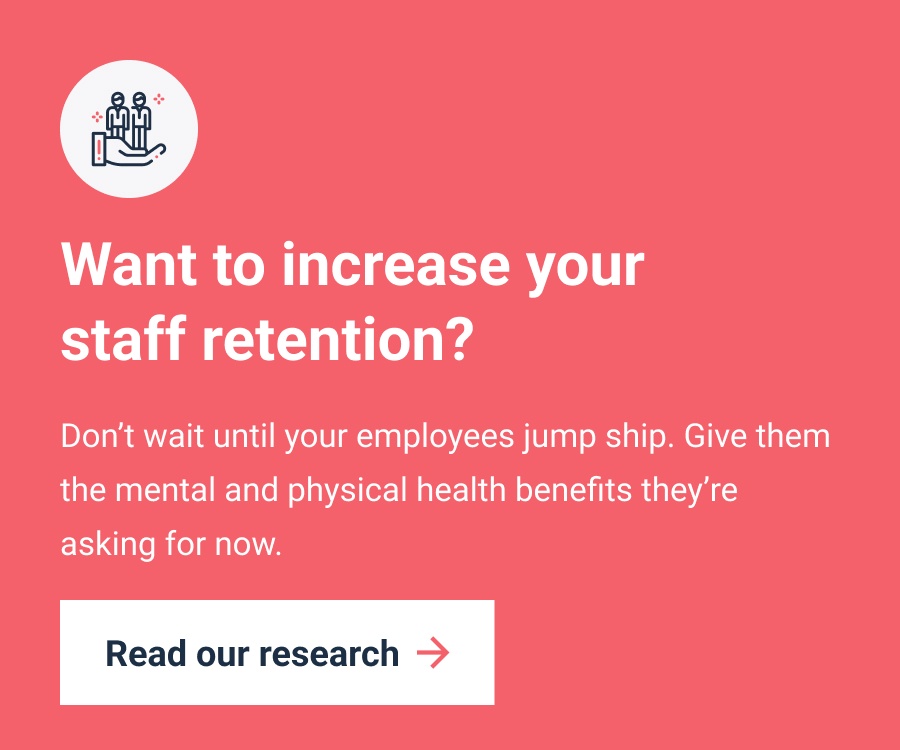Are two minds really better than one? In the workplace, the answer tends to be ‘yes’ – particularly when two minds disagree.
Perspectives matter. In fact, 77 percent of respondents surveyed by Indeed cited diversity and inclusion as ‘important’ or ‘very important’ to business performance.
And it’s not only business performance that improves when it comes to diversity and inclusion the workplace. A recent report by Linkov, I., Trump, B. & Kiker, G from April 2022 states: “Inclusion and diversity can be an advantage to generate innovative solutions [and] in teams, inclusiveness and diversity have been recommended as effective metrics for resilience.”
So, how can you embrace diversity and inclusion to help build resilient teams that thrive? The challenge is taking impactful action, not simply acknowledging its value - and that calls for a serious conversation about current approaches.
Here are eight powerful truths about diversity and inclusion to get the conversation started in your workplace.
1. Embrace diversity of thinking
 'Valuing diversity is not just a moral obligation... It is business critical... without neurodiversity, we wouldn’t be GCHQ, and these skills help us to achieve success at what we do.’ - GCHQ.
'Valuing diversity is not just a moral obligation... It is business critical... without neurodiversity, we wouldn’t be GCHQ, and these skills help us to achieve success at what we do.’ - GCHQ.
Neurodiversity refers to the way that everyone’s brains work differently from one another. However, hundreds of thousands of people think, act, behave, and interpret information in ways that are different to the majority. This is the neurodiverse community.
Many leading businesses are looking beyond demographic parity to a diversity of thinking. Why? Because research shows that it is a driver of creativity, enhancing innovation by about 20 percent. And helps teams spot risks, reducing them by up to 30 percent. More than ever, businesses need new perspectives, different ideas, and broader ways of thinking to solve big problems.
So, how can you encourage diversity of thought while not ignoring demographic diversity?
Support neurodiverse talent
The UK has a huge neurodiverse population—over 15% of the country and many businesses have caught on to the benefits of a neurodiverse workforce. Neurodiverse employees may excel at:
- Problem solving
- Creativity
- Consistency
- Spotting trends and patterns
- Data analysis
- Risk assessments
- Attention to detail
These skills are the reason Virgin supports Auticon, a majority-autistic technology consulting firm, has over 200 autistic adults working in software development, coding, and data analysis.
It’s important to remember that you’ll need the right tools and strategies to support neurodiverse individuals in the workplace. Their influence on your team can be hugely positive, but supporting them adequately is critical. Here a few ways you can support the wellbeing of neurodiverse individuals in your team or workforce:
- Provide the right accessible tools: This is where HealthHero can help. We provide quality care that is accessible to your employees. By pairing caring clinicians with innovative technology, we’ve created a safe and inclusive space where people can get a better understanding of their mental health, and neurodiverse needs. These tools shouldn't only be accessible to neurodiverse employees, but to everyone, as many people in the UK may be neurodiverse but not formally diagnosed.
- Champion and embrace positives: It is a true gift to have neurodiversity on your team and an exceptionally valuable skill. For example, by providing remote or hybrid working options, you can support not only neurodiverse people, but also those with childcare responsibilities, especially women in the workforce.
- Adjust deadlines and give time to prepare: Some organisations tend to say that everything needs to be done yesterday, yet that doesn't always get the best results. Instead, give employees time to prepare, and consider whether rushing a deadline adds value.
- Be open and encourage awareness: Learn about neurodiversity and think about educational programs for leaders and managers to ensure they understand the challenges neurodiverse individuals face. You can then play to their strengths and get a great team member out of them.
- Focus on both: Despite most companies’ focusing on diversity in the workforce, the neurodiverse community often gets overlooked in this discussion, and as a result, in support. They’re missing out, as research shows that the most high-performing teams are both cognitively and demographically diverse. Typically, a complex problem needs input from all mental abilities, as no one is equally good at all skills and competencies; hence, the need for collaborative teams.
2. Health is a new frontier in diversity
Did you know that employees experiencing poor health feel most stigmatised by this? Although it may seem obvious to focus D&I frameworks on gender, age and ethnicity, it’s also worth considering how people feel most discriminated against at work. In fact, a report by Business in the Community found that those suffering from poor mental health feel stigmatised by this more than anything else.
Moreover, they felt more comfortable talking about seven other diversity indicators, including their race, age, physical health, and religious belief. But just one in 10 of those said they felt able to disclose a mental health issue to their line managers.
Similarly, a report by the Government Equalities Office has highlighted the extent to which women affected by menopause feel at risk of ridicule and gendered ageism, with additional research showing that one in four menopausal women have considered quitting work because of their experiences.
Supporting the health of your employees
This makes health a new frontier in diversity. Especially given the extent to which these issues are not only impacting workplace performance but also reflected in society — one in four people are struggling with mental health issues, and more than half the population will go through menopause. Employers that are serious about being diverse must therefore do more to make those individuals affected feel included and supported.
In this sense, health related diversity initiatives — such as the introduction of mental health pathways to support employees living with mental health issues and wellbeing initiatives that normalise menopause (and make it acceptable for women to have reasonable adjustments) — will make a real difference on a practical level.
If you don’t already have a wellbeing strategy in place that supports health as a key driver for resilience, HealthHero can help. Bringing together tools for both mind and body, HealthHero supports employees' whole health, with on demand health services and specialised clinical support. We help you to give your people access to the innovative, high-quality health and wellbeing services they deserve, and the tools they need to thrive.
3. Diversity alone is not enough
Diversity + inclusion = better business outcomes, according to research. In other words, diversity without inclusion is less valuable than when combined.
First, people feel included when treated fairly and respectfully. The key to inclusion is participation without bias, which requires courtesy and non-discrimination.
Following that is feeling valued and having a sense of belonging. Individuals feel included when others appreciate their unique and authentic selves while having a sense of belonging to a group.
Inclusion is about making employees feel "safe" and empowered to speak up without fear of retaliation and empowered to grow and do their best work. Indeed, all these factors are crucial for diversity of thought.
However, you can only act and measure results if you are clear about your goals and know what the drivers of inclusion are.
4. Inclusive leaders empower others
It’s often stated that employees leave their managers, not companies. Did you know that business leaders increase employee feelings of inclusion by up to 70 percent? This is especially true for minority groups. Moreover, feelings of inclusion result in better team performance, decision-making, and collaboration. This remarkable impact reflects the power of an inclusive leader’s influence.
So, what sets highly inclusive leaders apart from others? They have the following six signature traits:
- Commitment: They are strongly committed to diversity and inclusion because it is in line with their values, and they believe it is good for business. They express their commitment, dare to take risks, and are personally accountable for change.
- Courage: They are modest about their own abilities and encourage others to contribute.
- Aware of bias: They are aware of their own shortcomings and prejudices in the workplace, and they strive to ensure others have the same opportunities.
- Curiosity: They are open-minded; they listen without judgment and seek to understand others.
- Culturally intelligent: They recognise others’ cultures and adapt as required.
- Collaborative: They empower others and enable a diversity of thinking to flourish by creating team cohesion.
Leading by example
Indeed, these traits go far beyond just being 'polite' to people or being aware of one's own biases. To embrace diversity business leaders must adjust their behaviours, lead by example and adapt the workplace to suit the needs of diverse talent. As the workplace has become increasingly diverse, inclusive leadership is critical to success.
But who supports the leaders? We’ve already mentioned the importance of leading by example, and this is where your wellbeing strategy really comes in to play. Proactive workplace wellbeing increases resilience across the board, at every level and for every employee. Invest in each member of your team equally, providing tools that help everyone to take care of their whole health and be sure that your leaders are equipped to positively lead by example.
5. Adjust the system for change
Diversity training programs come in many shapes and sizes. When done well, they boost awareness, uncover previously unspoken beliefs, and create a shared language to discuss D&I. This is a critical first step in changing a company's culture.
That said, training is often only the first step in changing behaviour. More specifically, you need to adapt the system to do so.
Take these four steps to reform the system:
- Use data to find leaks in the talent lifecycle: To do this, you can look at the demographics of your employees from recruitment to retirement, along with data on inclusion experiences.
- Identify and improve problematic areas: These are instances within specific talent processes where decision-makers are more susceptible to bias.
- Introduce positive behavioural changes: As an employer, you are responsible for bringing about positive change for your team. For instance, you could make flexibility the norm for all employees rather than a special arrangement for some. Using tools like those designed by HealthHero can help you to track the impact and wellbeing trends of your teams.
- Track the impact: Regularly review diversity and inclusion data to determine the effectiveness of changes made.
The truth is, reforming the system is just as important as changing behaviour, if not more so.
6. Diversity goals are the key to success
As you may already know, diversity and inclusion goals spark heated debate. On the one hand, these are one of the most effective ways for increasing the representation of women and other minority groups. On the other hand, accusations of reverse discrimination and fears of rewarding wrong behaviours can surface. Despite this, realistic goals are crucial.
But first, to achieve these, you need to communicate effectively what your goals are. For instance, goals don’t promise a talented woman a job or promotion. But they do mean that she will have an equal chance of being considered alongside a talented man.
Secondly, these goals should incorporate inclusion and diversity. At Google, for example, both are among its goals which are to increase leadership representation of Black, Latino, and Native American Googlers and celebrate the impact of these communities.
Thirdly, your goals can only succeed when key decision-makers are involved. For instance, business leaders who help set these promote diversity and inclusion as business priorities.
Lastly, diversity goals are most effective when coupled with recognition and rewards. Companies like Google, Accenture and Johnson & Johnson, are successful because they recognise their employees through consistent initiatives and incentives.
In summary, without realistic goals, ambitions for a diverse workforce are merely empty wishes.
7. Effective measures achieve diversity
Next, have measures in place to achieve your goals, so everyone has equal opportunity to grow, develop and succeed and where they hold each other accountable:
- Achieving gender balance: develop consistent initiatives spanning the entire career lifecycle – from recruitment, promotion, and success processes to mentoring, sponsorship and flexible working. Gender equality does not have to end with your organisation. Societal impact projects can also influence women and girls outside your organisations.
- LGBTQ+ Inclusion: Focus on reverse mentoring, ‘allyship’, and ensure your team members can ‘walk in the shoes’ of LGBT+ colleagues. For instance, Deloitte recently launched #QueerAllYear, which encourages people to follow them on social media for LGBT+ experiences in the workplace and the role allies can play. Additionally, have social spaces for employees to discuss issues and concerns about sexual orientation or be a champion through presence and representation at events.
- Supporting mental health: Offer resources to support your employees and help them care for one another. For example, podcasts, articles, videos, and educational materials, sharing practical tips and ideas from leaders to support wellbeing. This is also where a holistic mental health application, like HealthHero which blends convenience with human expertise means your team will be empowered to proactively manage their own mental health.
8. Don't tick boxes, change the culture
The final truth is the most important and ties together all seven above: A culture reset is essential to become fully inclusive for most businesses. Even though 71 percent aspire to have an 'inclusive' culture in the future, survey results show that actual capability is very low.
But how do you get there?
First, make employees aware of the value of diversity through initiatives, learning and other HR-led activities (such as unconscious bias training). Real change begins, however, when leaders challenge the norm, and remove barriers.
Furthermore, when leaders adopt inclusive behaviours, they influence employee behaviour and mindsets. They also ensure that communication is open, clear, and consistent. The last step involves fully embedding diversity and inclusion into all parts of your business such as innovation, customer experience, and workplace strategy.
In short, there will be no significant impact until you invest in a diverse and inclusive culture and make a robust plan for tracking the impact on your employees’ wellbeing.
Take action on diversity and inclusion
‘Diversity requires commitment. To achieve the superior performance diversity can produce, more needs to be done – most notably, developing a culture of inclusion. People do not just need to be different; they need to be fully involved and feel their voices are heard.’ – Alain Dehaze
Months celebrating diversity such as Pride are just one opportunity to address these powerful eight truths, start challenging conversations and celebrate different perspectives.
But, with diversity of thought now regarded as a significant boost to business success, you must do more. For diversity and inclusion to be truly effective, it must seep into all aspects of the workplace. First, you need to acknowledge that progress requires a culture reset, then build inclusive leadership, and more importantly, pay attention to the wellbeing needs of neurodiverse and other minority employees to foster a fully inclusive workplace.
Whatever action you take, keep diversity and inclusion at the centre.
For more information on how you can create a workplace where all employees shine, head over to our resources page and see our article about seven ways you can celebrate diversity.



-1.jpg?width=1280&name=Untitled%20design%20(2)-1.jpg)



%20(1)-1.jpg?width=800&height=450&name=christina-wocintechchat-com-YCrgxs3e9lY-unsplash%20(1)%20(1)-1.jpg)